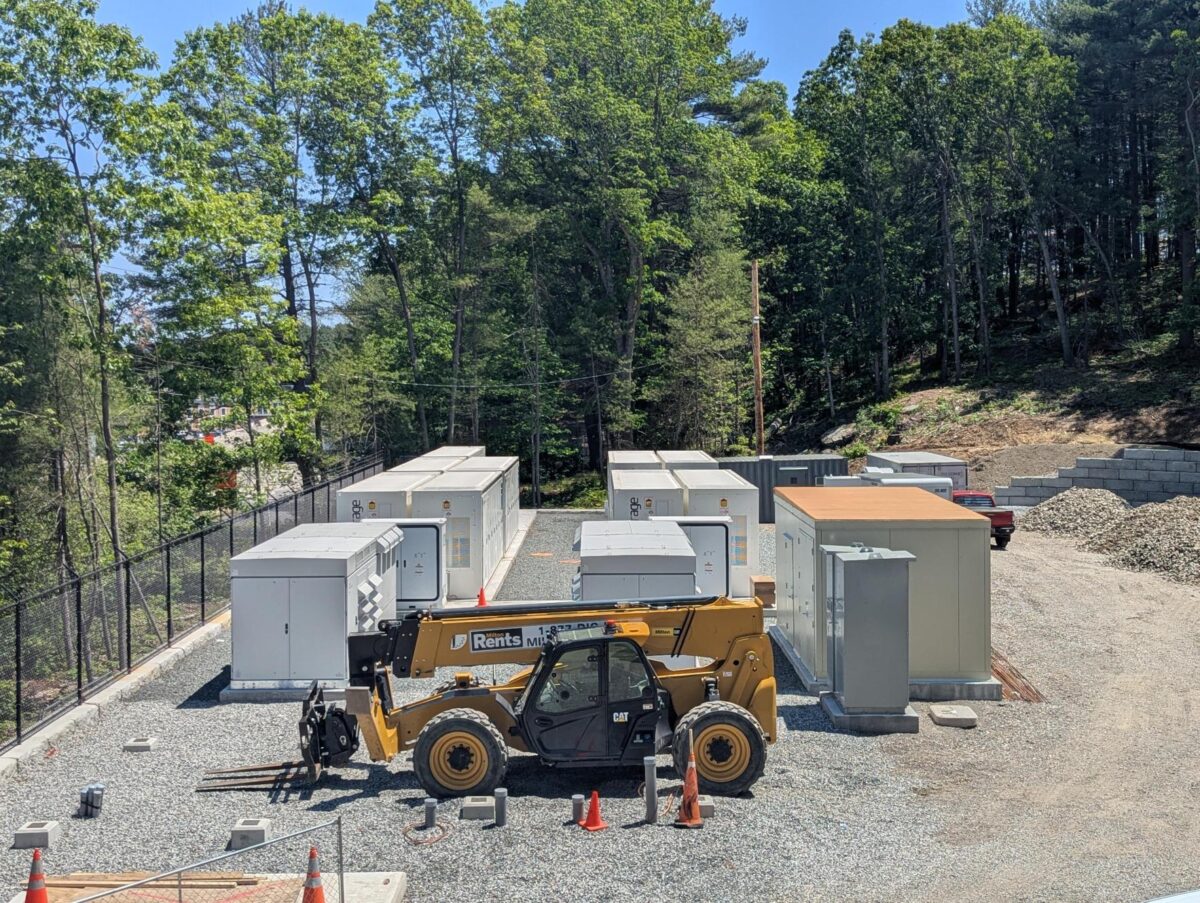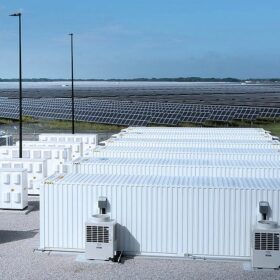Lightshift Energy, Wakefield Municipal Gas and Light Department (WMGLD) and the Massachusetts Municipal Wholesale Electric Company (MMWEC) announced the commercial operation of a 5 MW, 20 MWh battery energy storage system that will operate as a resilient, grid-connected microgrid.
The microgrid is located in Wakefield’s Energy Park, which will include a 493 kW solar installation at Wakefield High School and 364 kW installation at Northeast Metro Tech School.
“The solar will be used for school load first. Any excess not used by the schools will feed back to the bus at the Energy Park and will be used to supplement the output of the batteries,” Joe Leavitt, chief technology officer of Lightshift told pv magazine USA.
A natural gas generator only comes online to recharge the battery when it gets low, so only during extended microgrid operations, Leavitt said. The generator will also be used for peak load management to help with the economics of electrifying the schools. Peak load shaving works by charging the storage during cheaper daytime hours and discharging during more expensive evening periods.
The lithium-iron-phosphate (LFP) battery energy storage system is provided by Trina Energy Storage, Lightsource said.
The New England ISO region has regularly experienced a “solar duck curve” since at least 2018, providing an opportunity for energy storage to capitalize on price arbitrage.
Lightshift expects the battery system to save local customers $20 million over the life of the project, and it will also provide power to the two schools during outages.
“Energy storage was our first choice when identifying a more cost-effective and renewable solution to power the schools, compared to diesel backup generators that would have cost $1.2 million per generator,” said Peter Dion, WMGLD’s general manager. “We are incredibly grateful to have the entire town’s support to deploy the Lightshift battery that will provide cleaner, cheaper and more reliable electricity to our schools.”
The Wakefield installation is one of several projects that Lightshift and MMWEC have partnered on, planning to deploy up to 50 MW of two- to four-hour battery storage. One of the projects, for example, was developed for the Paxton Municipal Light Department and includes a 3 MW, 9 MWh system manufactured by Trina Energy Storage.
Lightshift also announced a $10,000 donation to the Boys & Girls Club of MetroNorth to support the establishment of its planned Energy Education Center, intended to inspire and educate the next generation of young leaders. The contribution is part of Lightshift’s Beyond the Grid initiative, which supports key organizations in the communities where the company develops and operates energy projects.
Lightshift Energy, founded in 2019, is a utility-scale energy storage project developer, owner and operator headquartered in Arlington, Virginia. The company reports it is developing a multi-gigawatt pipeline of energy storage projects throughout the United States.
MWEC is a designated joint action agency for municipal utilities in Massachusetts. Wakefield Municipal Gas & Light Department serves 14,000 electric customers and 7,000 gas customers in Wakefield, Massachusetts.
This content is protected by copyright and may not be reused. If you want to cooperate with us and would like to reuse some of our content, please contact: editors@pv-magazine.com.









By submitting this form you agree to pv magazine using your data for the purposes of publishing your comment.
Your personal data will only be disclosed or otherwise transmitted to third parties for the purposes of spam filtering or if this is necessary for technical maintenance of the website. Any other transfer to third parties will not take place unless this is justified on the basis of applicable data protection regulations or if pv magazine is legally obliged to do so.
You may revoke this consent at any time with effect for the future, in which case your personal data will be deleted immediately. Otherwise, your data will be deleted if pv magazine has processed your request or the purpose of data storage is fulfilled.
Further information on data privacy can be found in our Data Protection Policy.